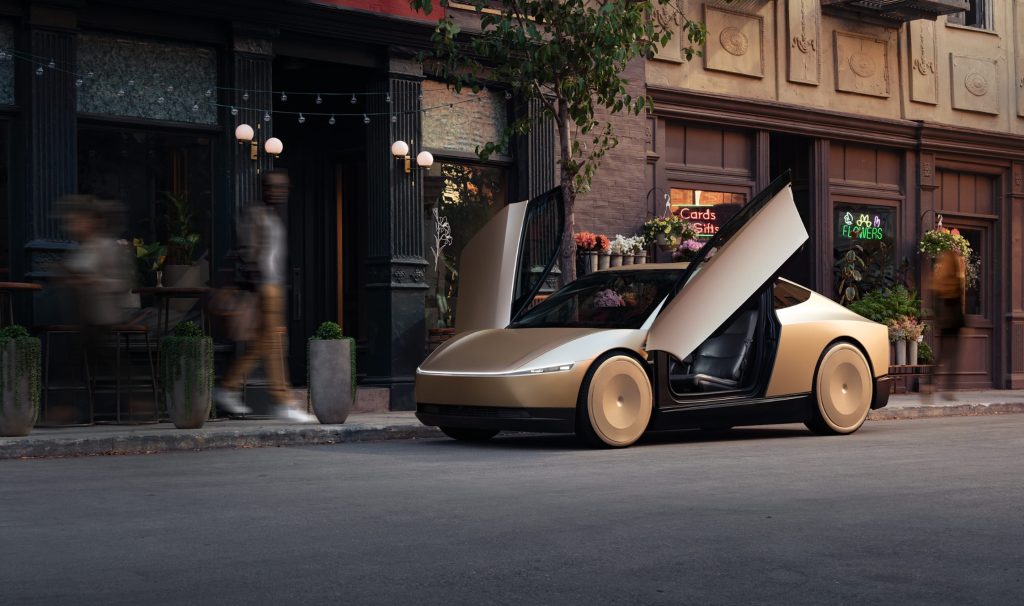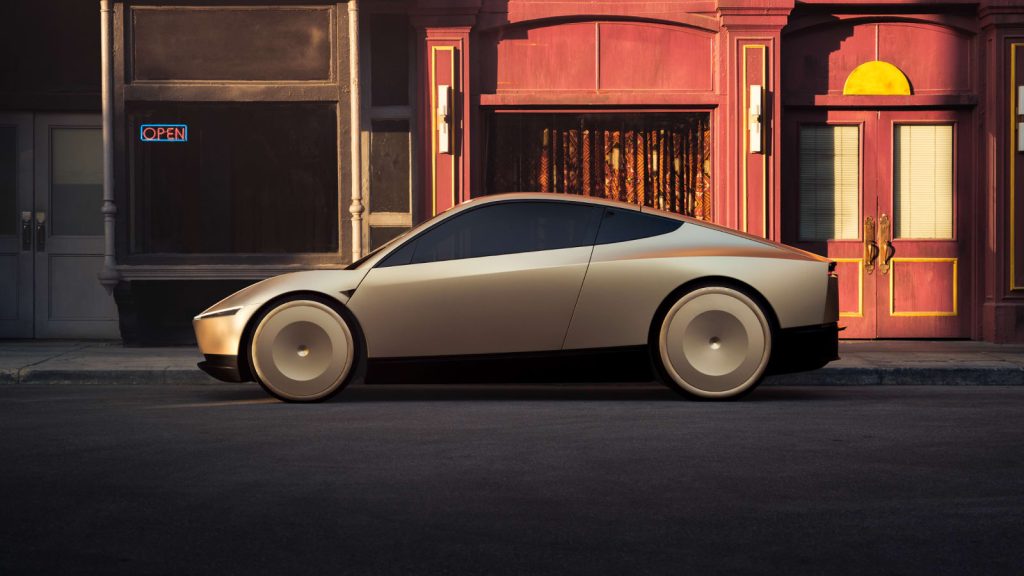Elon Musk unveiled his long awaited Robotaxi – the Tesla Cybercab – and there was a LOT to like:

- It’s gorgeous: as if an artist took a block of Cybertruck and rounded its stainless steel body into a sleek and sexy sedan.
- It’s a lounge on wheels: no steering wheel and no pedals. Simply hail the Cybercab with your smartphone, get in, and go!
- It’s efficient: instead of wasting time fighting traffic, you can take a nap, get some work done, watch a movie, or anything else!
- It’s cost-effective: most people only drive for 10 hours per week, leaving their vehicle unused for 158 hours (96% unused). Tesla will allow owners to monetize their Cybercabs when not in use (letting the general public hail them via app).
Musk declared the Cybercab a new era of transportation: individualized mass transportation. Whereas personal transportation costs about $1 per mile, Musk claims the Cybercab will dramatically cut those costs to only 20 cents per mile.
Not only that- you could actually PROFIT from owning a Cybercab and if you decide to own and operate a fleet, as Musk suggested, you could really clean up.
All this for the low, low price of under $30k. That’s right- Elon Musk himself claims the Cybercab will launch by the end of 2026 for less than $30,000. It sounds like a dream come true, but should you believe the hype?
Should you believe the hype?

If the Cybertruck is any indication, probably not. Musk announced the Cybertruck on November 21, 2019, suggesting it would be available starting at $39,900 by the end of 2021. In reality, Tesla delivered the first Cybertrucks on November 30, 2023, starting with the $100k+ Cyberbeast. Meanwhile, the more affordable rear-wheel drive base models aren’t slated for sale until at least 2025, with estimated prices starting at $60,990.
In Musk’s defense, the Cybertruck’s cost and timeline was impacted by supply chain disruptions and inflation stemming from the COVID-19 pandemic. Nevertheless, it’s unlikely that a first-of-its-kind electric pickup truck made of stainless steel was ever realistic at sub-$40k prices. It’s more likely that Musk’s bombastic proclamations were meant to fuel pre-sale reservations at $100/pop. It worked: hundreds of thousands of orders were placed in the first few days (and millions across months), giving Tesla access to hundreds of millions of dollars to fund the vehicle’s development.
Tesla offered no such reservation system following the Cybercab “We, Robot” announcement event. Did Elon learn his lesson on over-promising and under-delivering? Or did the Tesla lawyers clamp down on the CEO’s “free speech”?
Decide for yourself: here is the Tesla Cybercab Disclaimer that flashed on the screen just prior to the announcement.
How much will the Tesla Cybercab cost?
Musk has stated that the Tesla Model 3, Model Y, and Cybertruck will get full self driving next year (2025) in Texas, California, and any other state that will permit the vehicles. Meanwhile, he expects the Cybercab to be running by the end of 2026.
Given the disclaimer and Musk’s penchant for leaning on “free speech” for the purpose of persuasion, extrapolating the Cybertruck’s cost increase and delivery delays and similarly extending them to the Cybercab seem reasonable.
| Cybertruck | Cybercab | |
| Announcement | Nov 2019 | Oct 2024 |
| Estimated Delivery | Dec 2021 | Dec 2026 |
| Actual Delivery | Nov 2023 | ??? |
| Estimated Price | $39,990 | $30,000 |
| Actual Price | $60,990 | ??? |
Assuming the Cybercab faces a similar 2 year delay and 52% price increase… the Tesla Cybercab will cost $45,754 and deliveries will begin November 2028.
That being said, Tesla has yet to make their most affordable Cybertrucks available for sale, focusing first on the sale of Limited Edition vehicles with high-end upgrades.
Why the Cybercab is different
There is one glaring difference between the pricing strategy of the Cybertruck vs. Cybercab: fares from the Cybercab could drive revenue for not only vehicle owners but also Tesla themselves.
In a move to compete with the likes of Uber and Lyft, Elon Musk could potentially price the new Robotaxis at loss, in an effort to gobble up market share and rapidly increase fleet size. If Tesla can deliver a vehicle to customers with razor thin profit margins, they’ll almost certainly make up the difference through a Robotaxi app that connects vehicle owners to riders, splitting the revenue.
It seems the biggest obstacle to Musk’s new tech toy taking over the roads is likely government regulation of self-driving vehicles.
